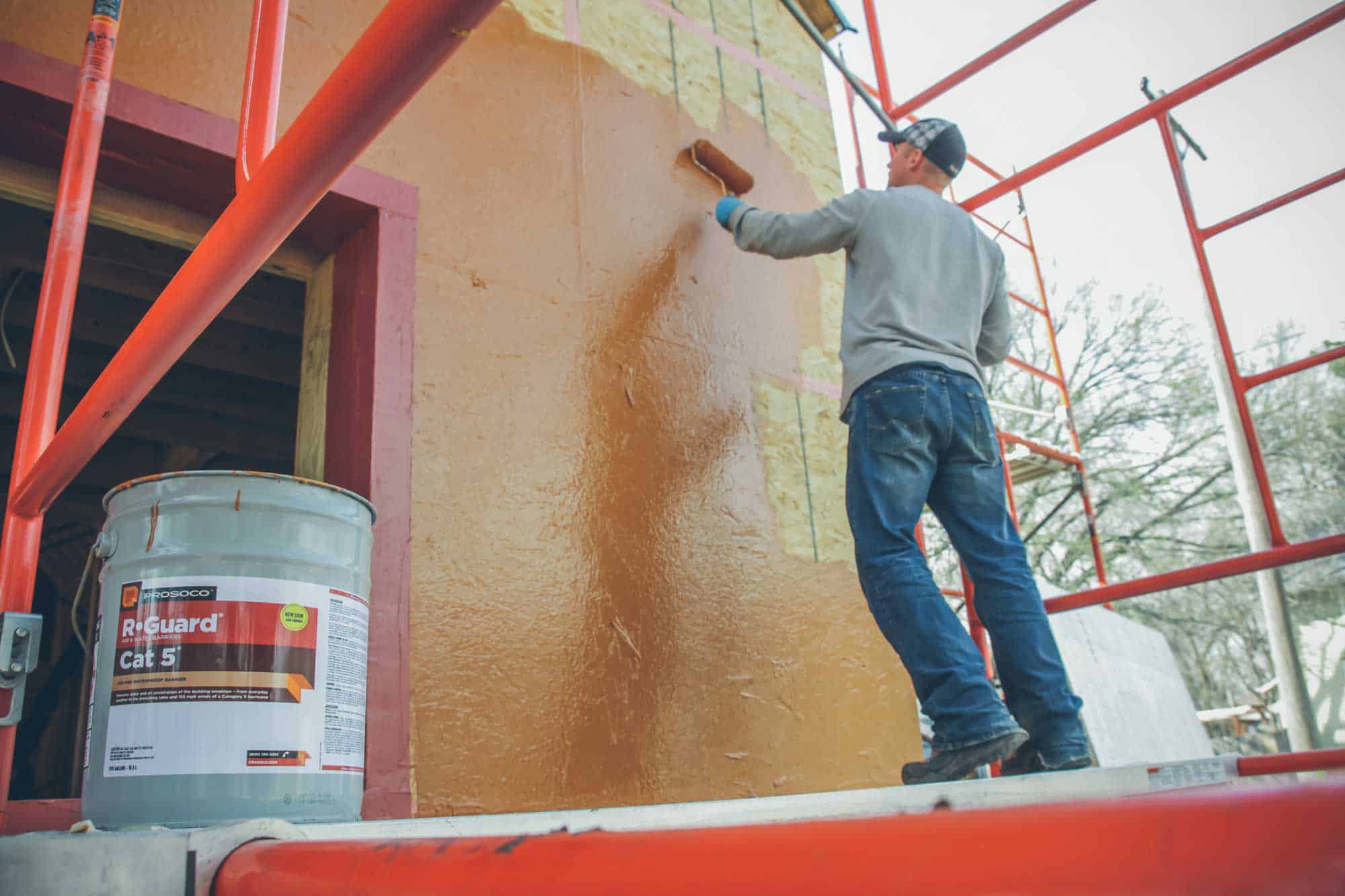Around the same time that PROSOCO broke into the finished concrete flooring market, the company was also pursuing a range of products focused on an entirely new component of the building envelope: The air barrier.
At the time, not many people were well-versed in air barriers. Boyer’s interest was fueled by a growing number of projects he’d visited to respond to claims of underperforming PROSOCO water repellents.
On these jobs, contractors were relying on surface-applied, penetrating water repellents to resolve seasonal water penetration into newly erected or recently re-sealed masonry buildings.
It had become increasingly clear to Boyer that they were asking too much of a topically applied protective treatment.
“The industry’s traditional, common sense methods to manage bulk water over masonry facades were being abandoned in order to modernize design styles aimed at reducing as-built costs.”
“When you start digging into walls trying to determine the cause of water penetration, you come to realize how changes to the way we build impact the amount of water that enters and accumulates within the exterior walls, or the building envelope. These problems were more than skin deep, more than any topically applied protective treatment could possibly overcome.”
The industry was in transition.
“Around that time, I was starting to hear and read about the introduction of a new barrier in the wall assembly called an air barrier, introduced to control the unintended movement of conditioned air from inside out, and outside in.”
As the result of work with two industry partners, R-Guard air and water barriers were launched in 2006.
R-Guard products were among the first fluid-applied air barriers on the market. Though initially focused on fairly traditional technologies, by 2008 the company had transitioned to a vastly improved chemistry based on silyl-terminated polyether (STPE) technology, which set a new standard for the industry.

Besides being fluid-applied, these products focused on making envelopes waterproof and breathable.
“Whatever you apply as an air barrier also needs to facilitate drying of a wet wall assembly,” Boyer said. “Very few major competitors were on board with that concept in the beginning.”
Being immediately waterproof, compatible with damp surfaces, and vapor-permeable were just three of more than a dozen characteristics outlined in the “contractor’s wish list,” a list of practical field performance considerations used to develop the still-expanding range of PROSOCO R-Guard products.
“The challenge is to make sure that when your assembly -- a complex layer upon layer of dissimilar materials -- gets wet, it can dry in a controlled fashion before bad things like mold, mildew, rot and oxidation start to occur,” said Boyer.
Naturally, many copycats followed. As a company that continues to pioneer markets and products, this no longer surprises Boyer.
His reaction?
“It depends how old you are. When I was younger it was frustrating, but it’s kind of flattering now. I’m happy to see the industry advance.”
![]()